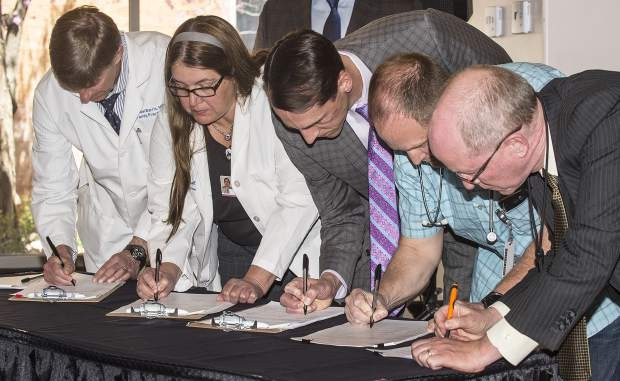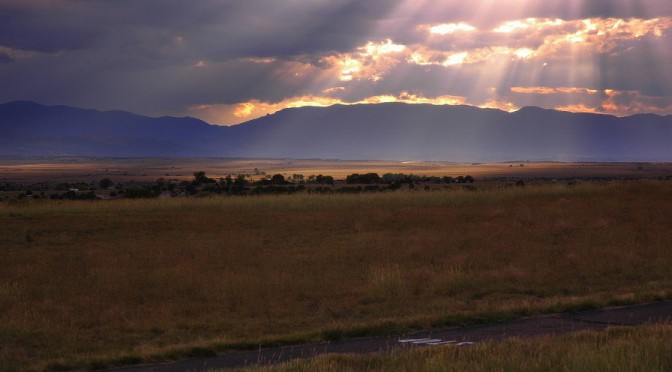Warnings from a Doctor
by Brad Roberts, MD: I recently finished my residency in emergency medicine and began to practice in Pueblo, Colorado. I grew up there, and I was excited to return home. However, when I returned home, the Pueblo I once knew had drastically changed. (Above photo is of people lining up at the opening of a pot dispensary in 2014.)
Where there were once hardware stores, animal feed shops, and homes along dotted farms, I now find marijuana shops—and lots of them. As of January 2016, there were 424 retail marijuana stores in Colorado compared with 202 McDonald’s restaurants.1 These stores are not selling the marijuana I had seen in high school.
Multiple different types of patients are coming into the emergency department with a variety of unexpected problems such as marijuana-induced psychosis, dependence, burn injuries, increased abuse of other drugs, increased homelessness and its associated problems, and self-medication with marijuana to treat their medical problems instead of seeking appropriate medical care.
I had expected to see more patients with cannabinoid hyperemesis syndrome (and I have), but they were the least of my concern. Our local homeless shelter reported seeing 5,486 (unique) people between January and July 2016, while for the entire year of 2013 (before recreational marijuana) that number had been 2,444 people.2
Most disturbing, we weren’t seeing just homeless adults but entire families. It is a relatively common occurrence to have patients who just moved here for the marijuana show up to the emergency department with multiple medical problems, without any of their medications, often with poor or nonexistent housing, and with no plan for medical care other than to use marijuana.
They have often left established medical care and support to move here for marijuana and show up to the emergency department, often with suitcase in hand.
Increasingly Potent & Dangerous Drug
This new commercialized marijuana is near 20 percent tetrahydrocannabinol (THC, the psychoactive component of cannabis), while the marijuana of the 1980s was less than 2 percent THC.
This tenfold increase in potency doesn’t include other formulations such as oils, “shatter” (highly concentrated solidified THC), or “dabbing” (heated shatter that is inhaled to get an even more potent form) that have up to 80 or 90 percent THC.3
The greatest concern that I have is the confusion between medical and recreational marijuana. Patients are being diagnosed and treated from the marijuana shops by those without any medical training. I have had patients bring in bottles with a recommended strain of cannabis and frequency of use for a stated medical problem given at the recommendation of a marijuana shop employee.
My colleagues report similar encounters, with one reporting seeing two separate patients with significantly altered sensorium and with bottles labeled 60 percent THC. They were taking this with opioids and benzodiazepines.
In some cases, places outside of medical clinics, like local marijuana shops, are being used to give screening examinations for medical marijuana cards.4 Reportedly, no records are available from these visits when requested by other medical providers. A large number of things treated with marijuana, often with no cited research at all or with severe misinterpretation of research, are advertised online.
These include statements that marijuana treats cancer (numerous types), cystic fibrosis, both diarrhea and constipation, hypoglycemia, nightmares, writer’s cramp, and numerous other conditions.5–7
Although there are likely some very effective ways to use the cannabinoid receptor (probably better termed the anandamide receptor), putting shops on every street corner and having nonmedical personnel giving medical advice is a very poor way to use this as a medicine.
Furthermore, to suggest that combustion (smoking) be the preferred route of medication delivery is harmful.3,8–10 I am also concerned that this is being widely distributed and utilized as a medicine prior to safety and efficacy studies having been completed; widely varying dosing regimens, concentrations, and formulations are being developed, sold, and utilized.
Patients are not being informed of the adverse effects associated with marijuana use, but instead, they are being told, “There are no adverse effects.” I am in favor of using the anandamide receptor for treatment purposes. However, we should do this safely and appropriately. What is occurring now is neither safe nor appropriate.
There are numerous adverse effects of marijuana that are significant. Marijuana use may lead to irreversible changes in the brain.3,9,11,12 Marijuana use correlates with adverse social outcomes.3
It is strongly associated with the development of schizophrenia.13–16 Dependence can lead to problem use.17,18 There are adverse effects on cardiovascular function, and smoking leads to poor respiratory outcomes.3,19,20 Traffic fatalities associated with marijuana have increased in Colorado.1
Pregnant women are using marijuana, which may lead to adverse effects on the fetus, and pediatric exposures are a much more common occurrence.21,22

Different Approach Is Needed
We should approach mass marijuana production and distribution as we would any other large-scale public health problem. We should do what we can to limit exposure, and we should provide clear, unbiased education.
In the case of prevention efforts being unsuccessful, we need to provide immediate treatment and assistance in stopping use. If we are going to use this as a medication, then we should use it as we use other medications. It should have to undergo the same scrutiny, Food and Drug Administration approval, and regulation that any other medication does. Why are we allowing a pass on a medication that very likely would carry with it a black-box warning?
As emergency physicians, we are on the front lines. We treat affected patients; we need to be at the forefront of public policy recommendations at both state and national levels.
Originally published by ACEPNow, a journal of Emergency Medicine. We also published the testimony of another emergency doctor in Pueblo, Dr. Karen Randall.



